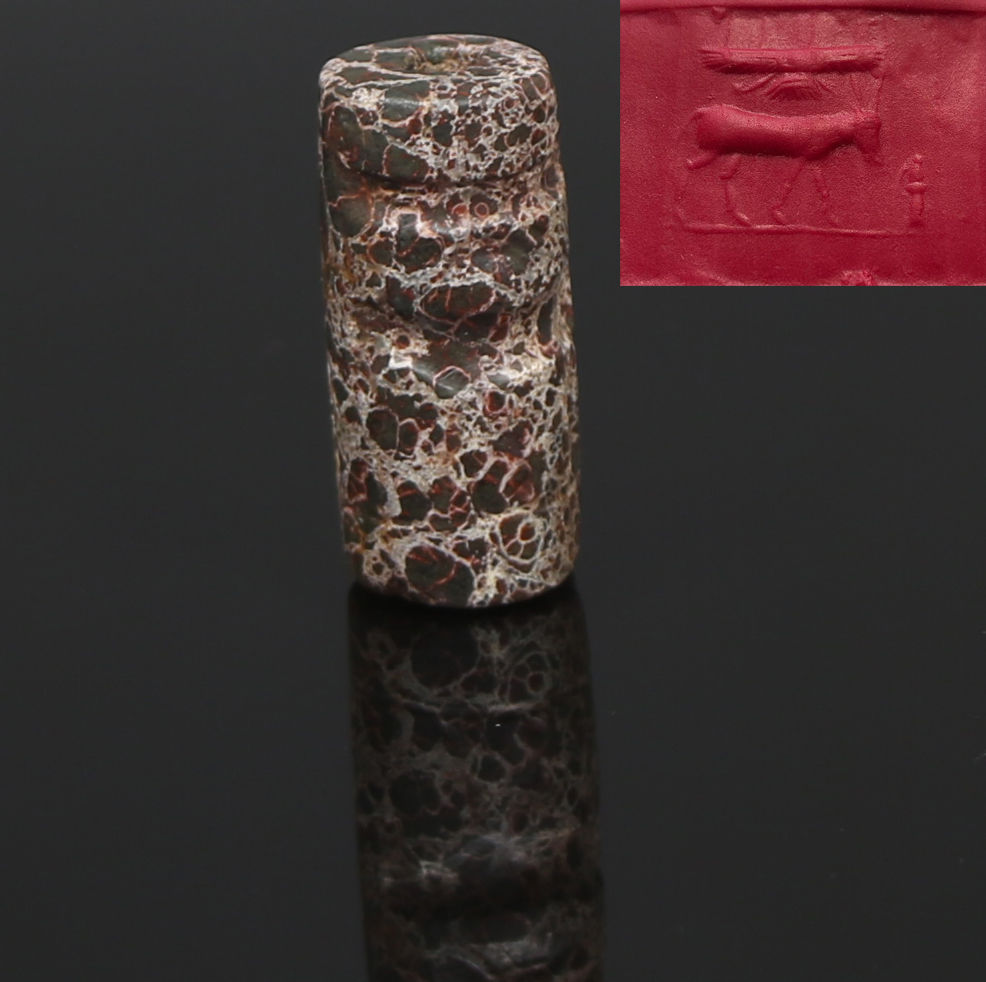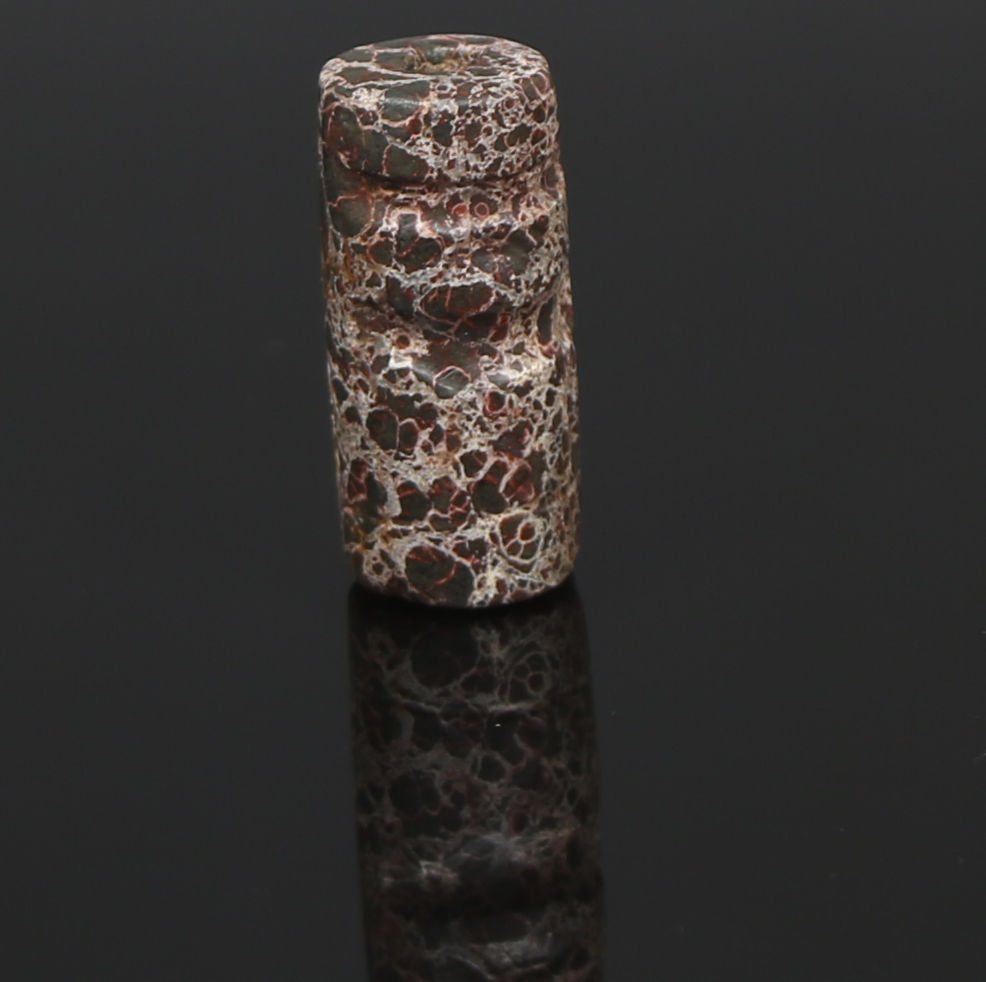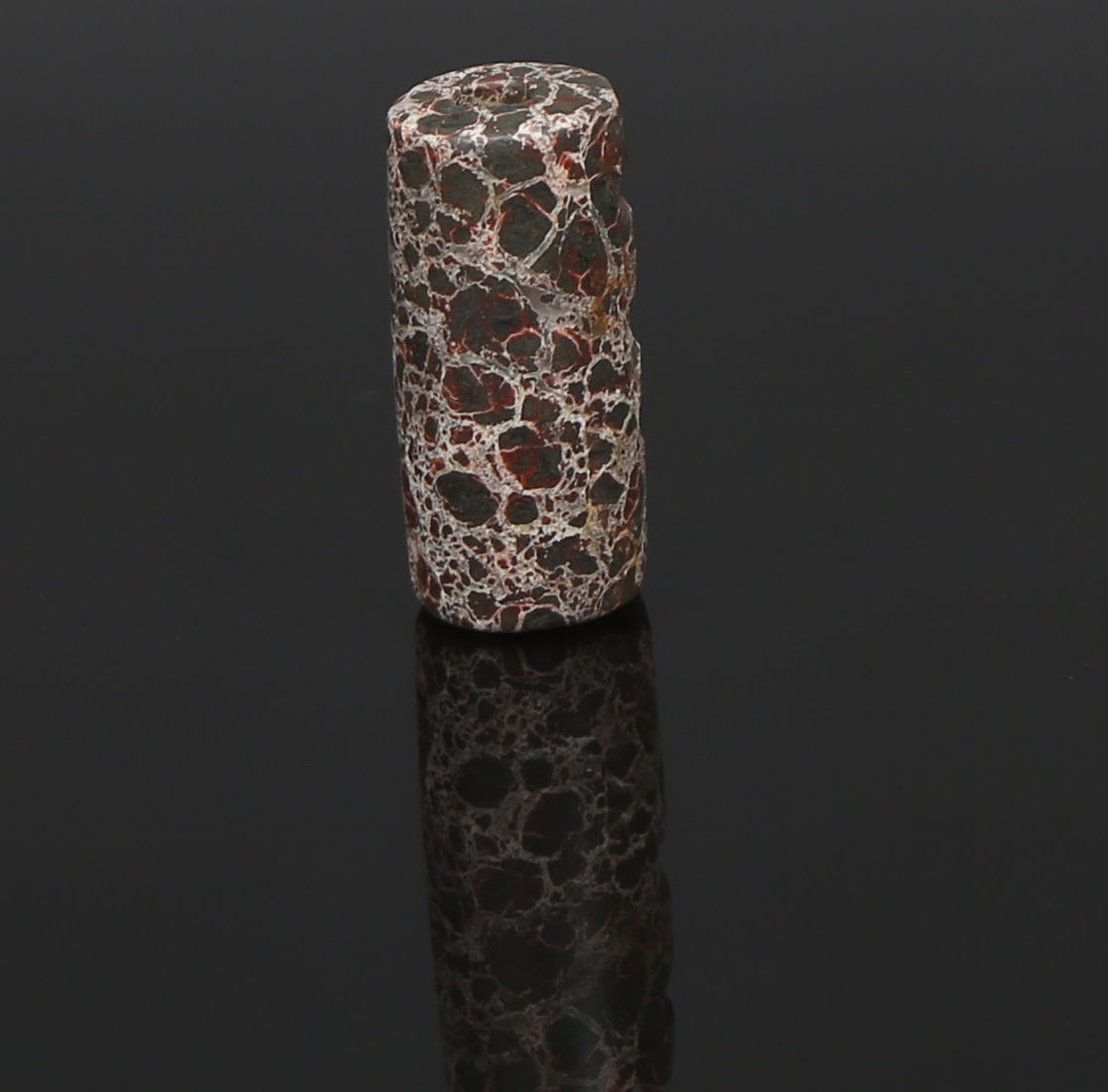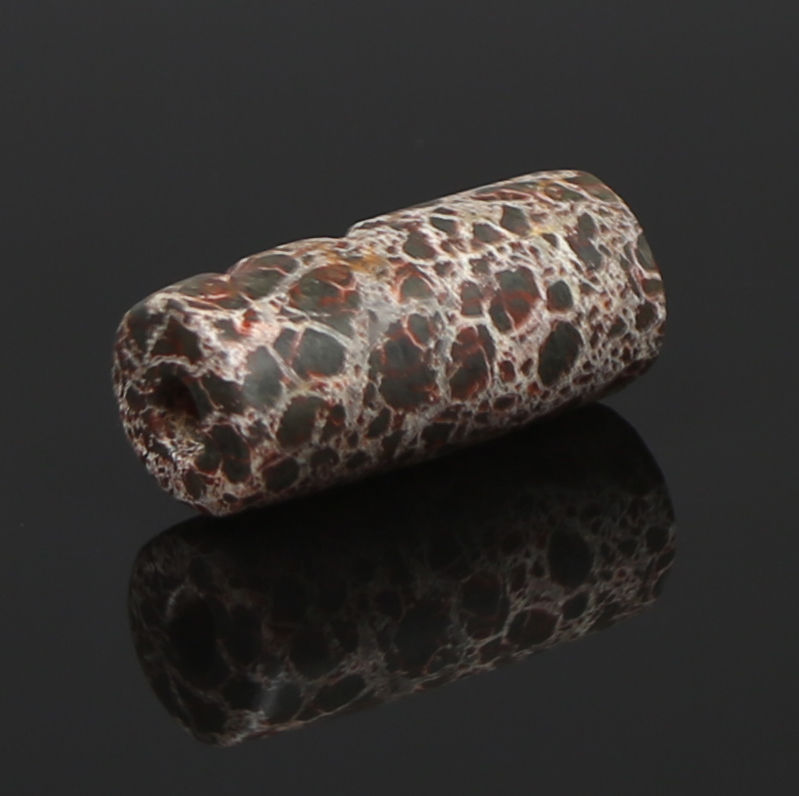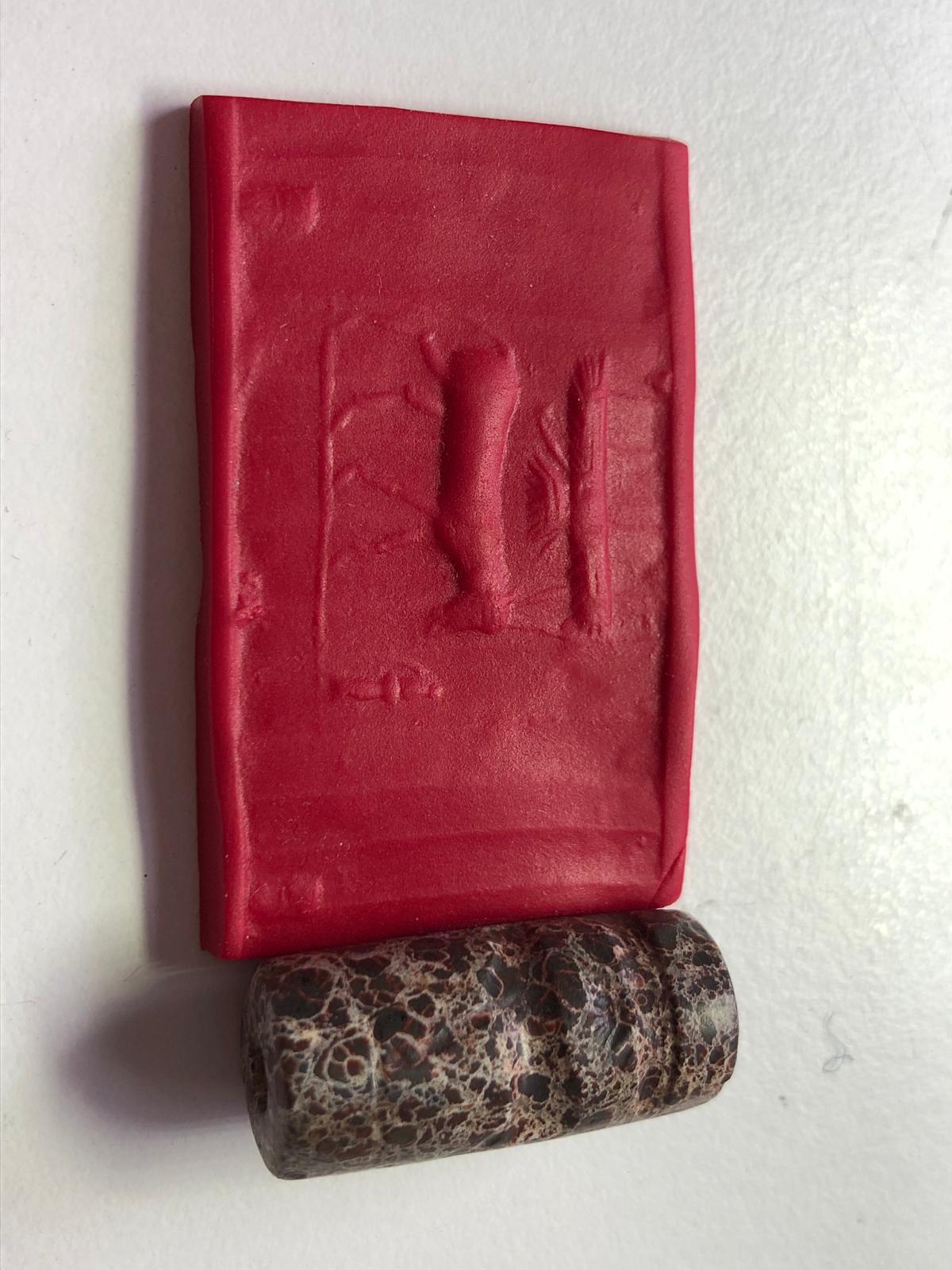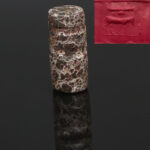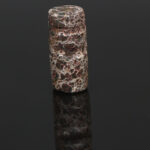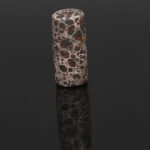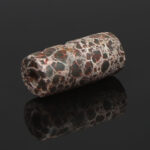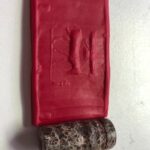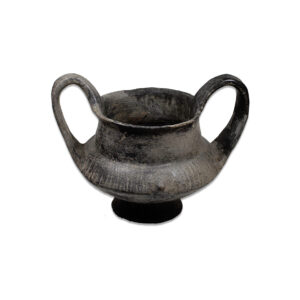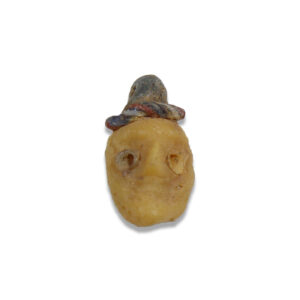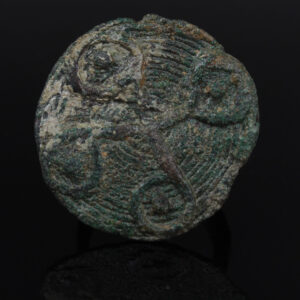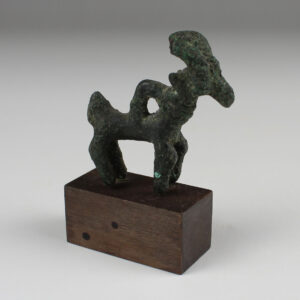Description
| ITEM | Cylinder seal depicting horse or donkey held by the god Ahuramazda |
| MATERIAL | Specked stone |
| CULTURE | Iron Age, Achaemenid Empire |
| PERIOD | 550 – 330 B.C |
| DIMENSIONS | 27 mm x 11 mm |
| CONDITION | Good condition |
| PROVENANCE | Ex Museum Exhibiton of the Arbeitsgruppe für Biblische Archäologie, Germany (Deaccession) |
Cylinder seals were important artifacts in the Achaemenid Empire, serving as both practical tools and symbols of authority and identity. These seals were typically made from materials such as stone, precious metals, or glazed ceramics and were cylindrical in shape, with designs carved or engraved into the surface. Cylinder seals were used to impress images or inscriptions onto clay or wax seals, which were affixed to documents, containers, or other objects to mark ownership, validate transactions, or secure correspondence.
In the Achaemenid Empire, cylinder seals played a crucial role in administrative, economic, and diplomatic affairs. They were used by officials and bureaucrats to authenticate documents, contracts, and decrees, ensuring the integrity and legality of official transactions and communications. Cylinder seals bore inscriptions in various scripts, including Old Persian, Elamite, and Akkadian, reflecting the multilingual and multicultural nature of the Achaemenid administration and its vast empire.
Beyond their practical utility, cylinder seals in the Achaemenid Empire also served as symbols of royal authority and identity. Many seals bore images or motifs associated with Achaemenid kingship, such as the royal emblem known as the Faravahar, depicting a winged figure or a king in regal attire. These seals conveyed messages of legitimacy, power, and divine favor, reinforcing the authority of the Achaemenid rulers and their right to rule over their vast empire.


